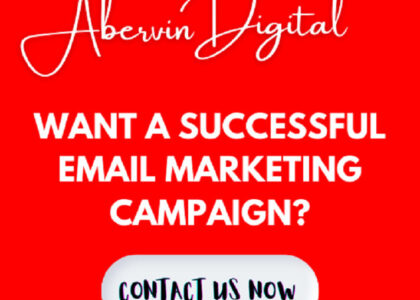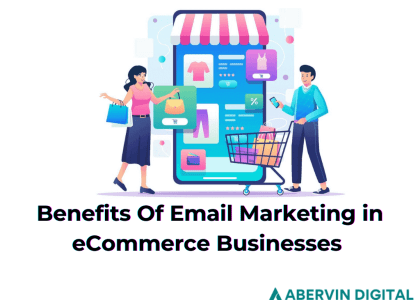“Just Run Ads” Isn’t a Strategy Anymore!
Scaling an ecommerce brand in 2025 isn’t about throwing cash at Facebook ads and hoping for the best. Today, customers are smarter, competition’s tougher and the platforms are changing their rules just about every other day now. And if you’re still relying on “just run ads” to scale ecommerce, you’re already behind.
If you’re reading this and your store feels stuck, your abandoned carts are piling up, or your email flows get ghosted harder than a bad Hinge date… this post is your way out.
We’ve rounded up 11 expert-backed strategies that show you how to scale ecommerce the smart way.
These aren’t vague tips like “optimize your website.” They’re real, actionable moves that turn browsers into buyers, and buyers into repeat customers. We’re talking real strategies that make you go, “Wait, why am I not already doing that?”
What You’ll Learn In This Guide:
- How to scale ecommerce website traffic without blowing your budget.
- How to build a brand people brag about (not just buy from once)
- Funnels and automations that bring customers back…without begging. If you want a deeper breakdown on the tools, benefits, and strategy behind this, check out our full guide on email automations for ecommerce in 2025.
- The actual strategies scaling 6–7 figure ecommerce stores right now
This isn’t a “someday” guide. These tactics are battle-tested and ready to plug into your business today. Whether you’re running a one-product Shopify store or scaling a catalog on WooCommerce, you’ll find what’s working right now to scale ecommerce with less guesswork and more growth.
5 FOUNDATION SECRETS TO SCALE ECOMMERCE BUSINESSES
Before you run ads, tweak headlines, or chase the latest shiny marketing hack, hit pause.
To scale ecommerce the right way, you need one thing most founders skip: a rock-solid foundation.
These five secrets we will be going over has helped brands start and grow intentionally without wasting time, cash, or sanity. Whether you’re figuring out how to scale ecommerce from early traction or trying to build momentum again, this is where your growth starts.
Let’s get into it.
Secret #1: Build a Brand, Not Just a Store
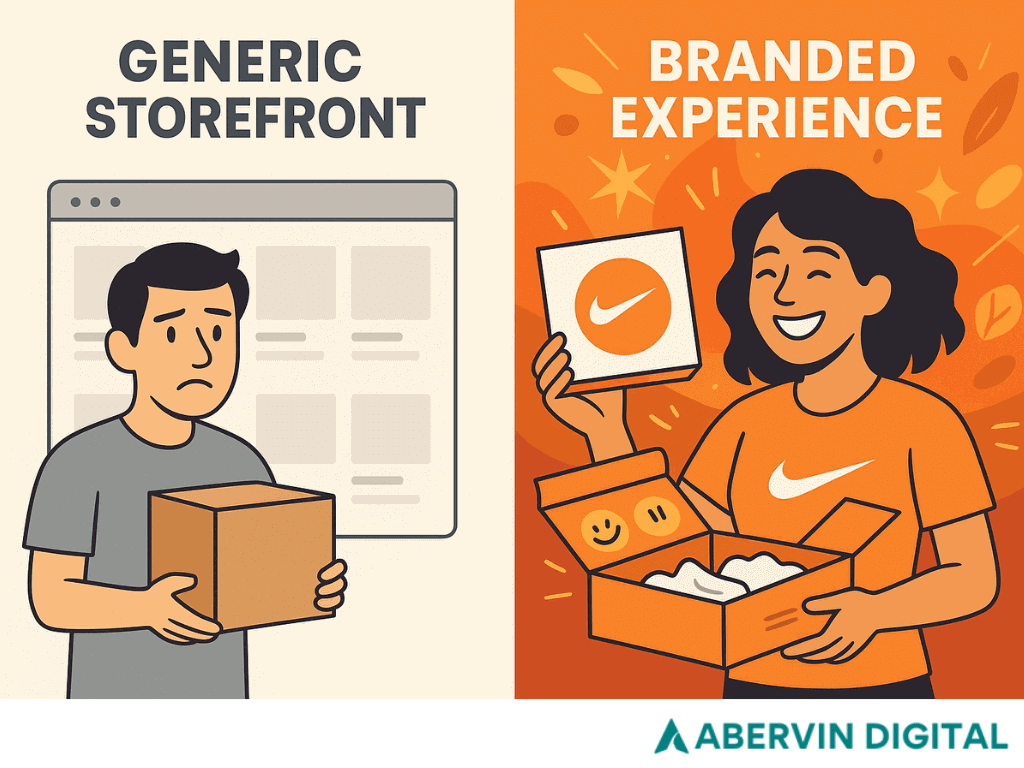
Launching a store is easy. A few Shopify clicks, a Fiverr logo, some AliExpress products – boom, you’re live.
But there is one small problem – the internet is overflowing with “stores.”
And most of them are forgettable. The brands that win make people care. They create loyalty, word-of-mouth, and repeat sales. And the difference is the brand. It’s the feeling customers get when they visit your site, open your email, or unbox your product.
Look at Apple or Nike. You’ll notice they don’t lead their marketing with all the cool tech specs or product features they have. If they did that, they’ll be in an endless race against trends.
They instead lead with an emotion their audience can connect to. So while Apple sells creativity, Nike sells grit. And if look around you, you’ll find Nike fans or Apple fans, people who vibe with these emotions and you’ll notice these aren’t just products, they’ve become movements.
To scale ecommerce, especially in a crowded space, your story matters more than your SKU count. Ask yourself:
- What do we believe that others don’t?
- What emotional shift do we want our customers to feel after buying from us?
- If our brand were a person, what would they be like at a dinner party?
When you know who you are and what you stand for, everything, from your ads to your about page falls into place. And in a sea of online stores, communicating with clarity what your brand stands for is what makes people say, “This is for me.”
Because people don’t fall in love with stores. They fall in love with stories.
Secret #2: Choose Products That Scale, Not Just Sell
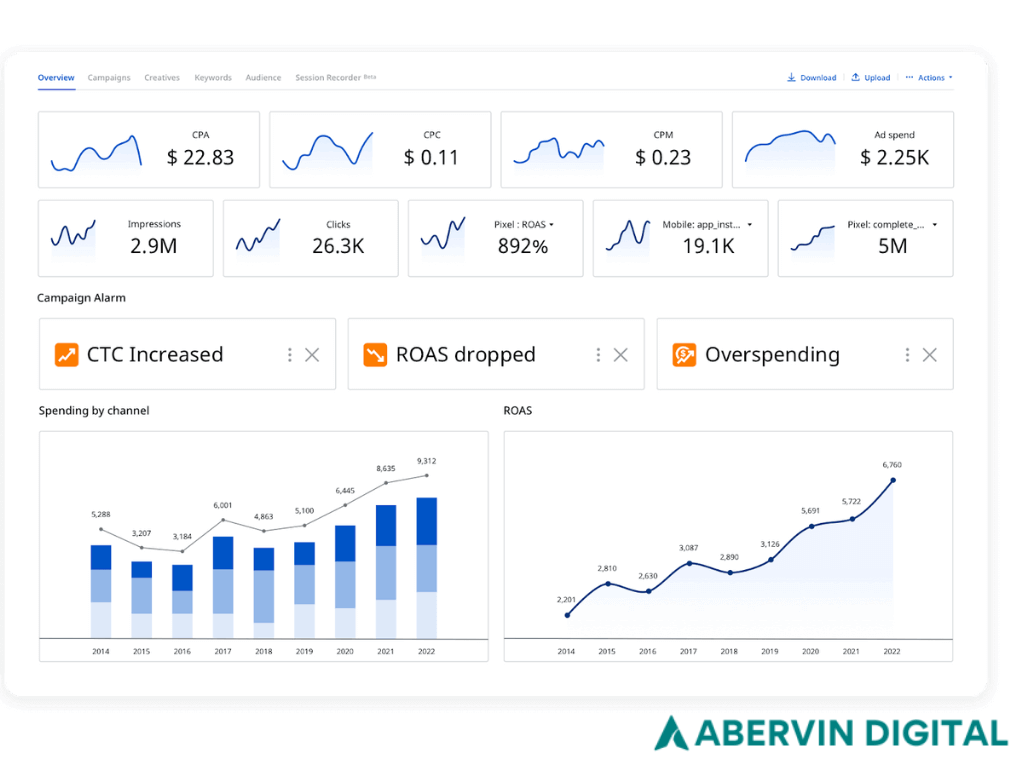
First sales feel great. That “cha-ching” hits and you’re hooked. But don’t mistake early sales for scalable growth.
Scaling ecommerce isn’t about chasing every trending product. It’s about finding offers that you can grow without burning your ad budget to the ground. If you’re spending $20 to make a $5 profit, or burning cash on ads every time you need a sale, that’s not a business. That’s a bonfire.
Here’s how to spot products that scale:
- Clear demand : This means people are already looking for it or experiencing the problem it solves.
- Healthy margins: This way you’re not in a pricing war.
- Long-term relevance: It’s evergreen and still relevant six months from now… not here today… gone tomorrow.
So if you’re building a catalog, ask yourself, would someone come back for this in 6 months? Would they tell a friend? Does it solve something real?
Products that solve real problems don’t just sell once… they get re-ordered, shared, and remembered.
Want to know how to scale ecommerce website traffic and revenue without adding 10 more SKUs? Start with products that naturally grow with you.
Secret #3: Scale Ecommerce by Prioritizing Customer Lifetime Value (LTV)
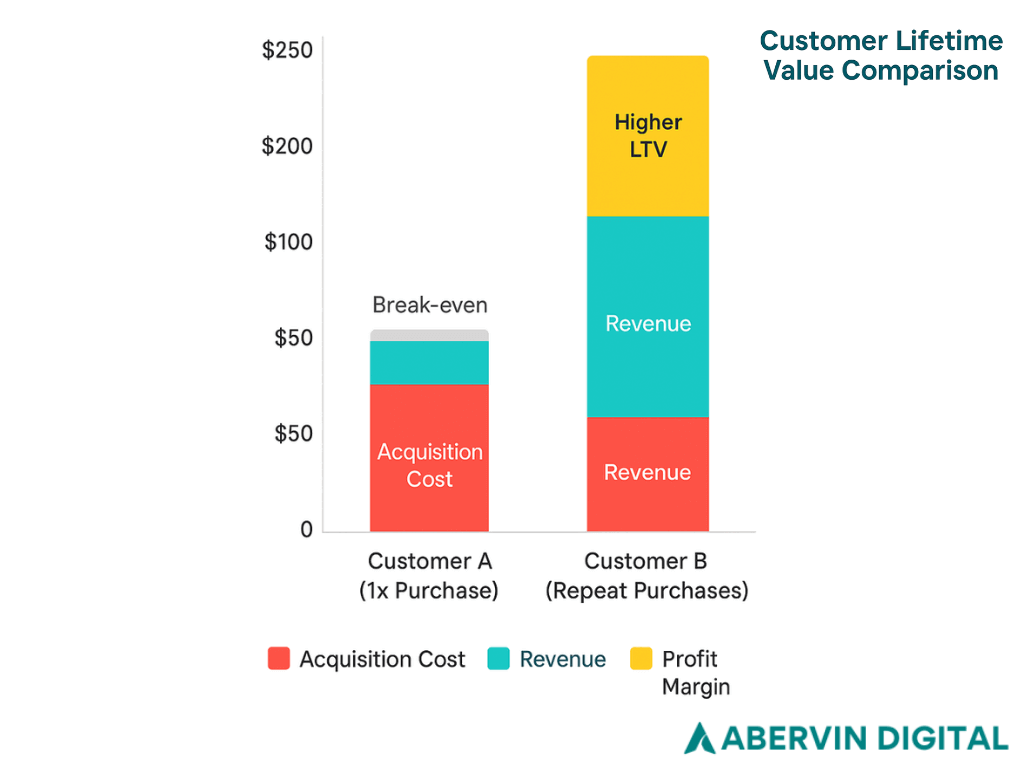
If you want to scale ecommerce profitably, chasing first-time sales won’t cut it. Successful founders learn early that customer retention is where the real money is.
Acquiring a customer is expensive. But when you increase their Lifetime Value (LTV), every acquisition becomes more profitable. That’s how you scale faster and more sustainably. So instead of just chasing the next sale, start thinking how much someone is likely to spend with you over their entire journey.
For example, if it costs you $50 to get a sale and the customer only buys once, you might break even. But if they come back three more times? Now we’re talking serious margin.
So how do you raise LTV without feeling pushy or salesy?
For starters, the mindset to have when looking to raise LTV is not to squeeze more money from people – it’s about serving them so well, they’d rather not go anywhere else. You can do this with;
Smart upsells
Think Spotify’s “Go Ad-Free” or Glossier’s subtle-yet-smart bundled recommendations. These are strategic plays in any ecommerce scaling strategy. The best upsells feel helpful, not pushy. They give the customer what they already want or need, increasing average order value without harming the experience.
When you’re figuring out how to scale your ecommerce business, smart upsells are low-hanging fruit. AI-driven tools like Rebuy, LimeSpot, or even Shopify’s built-in recommendations can dynamically surface relevant products based on browsing and cart behavior. A customer buying headphones might appreciate a discount on a matching case or a Bluetooth adapter.
Subscriptions
Whether you’re selling skincare, vitamins, coffee beans, or protein powders… subscriptions can transform your revenue model. You move from unpredictable, one-off sales to consistent, recurring income. That reliability is gold when trying to scale an ecommerce business sustainably.
Customers also benefit from subscriptions as they offer convenience and peace of mind. They don’t have to remember to reorder every month. Brands like Dollar Shave Club, Native, and Care/of built their entire growth around this model. More importantly, they made it feel personal.
If you’re wondering how to scale an ecommerce website, this is one strategy that blends cash flow stability with customer loyalty. Use subscription-friendly platforms like Recharge or Skio, and make sure the value of “set it and forget it” is communicated clearly in your email flows and product pages.
Loyalty programs
Loyalty programs are one of the most effective ways to scale your ecommerce website while increasing customer lifetime value (LTV). When you do it right, it does two powerful things at once: make customers feel appreciated and give them a reason to come back again (and again).
And we’re not talking about generic discounts here. Give customers rewards they actually want like when someone hits a milestone with your brand, maybe three orders in a row, you celebrate them.
Let them know they matter. When your brand makes them feel good, they become superfans and talk about you, post your packages on Instagram, text their friends your link, and defend you in the comments section when someone throws shade. So yes, reward people for sticking around.
Secret #4: How to Scale Ecommerce Website Growth With a Unique Value Proposition
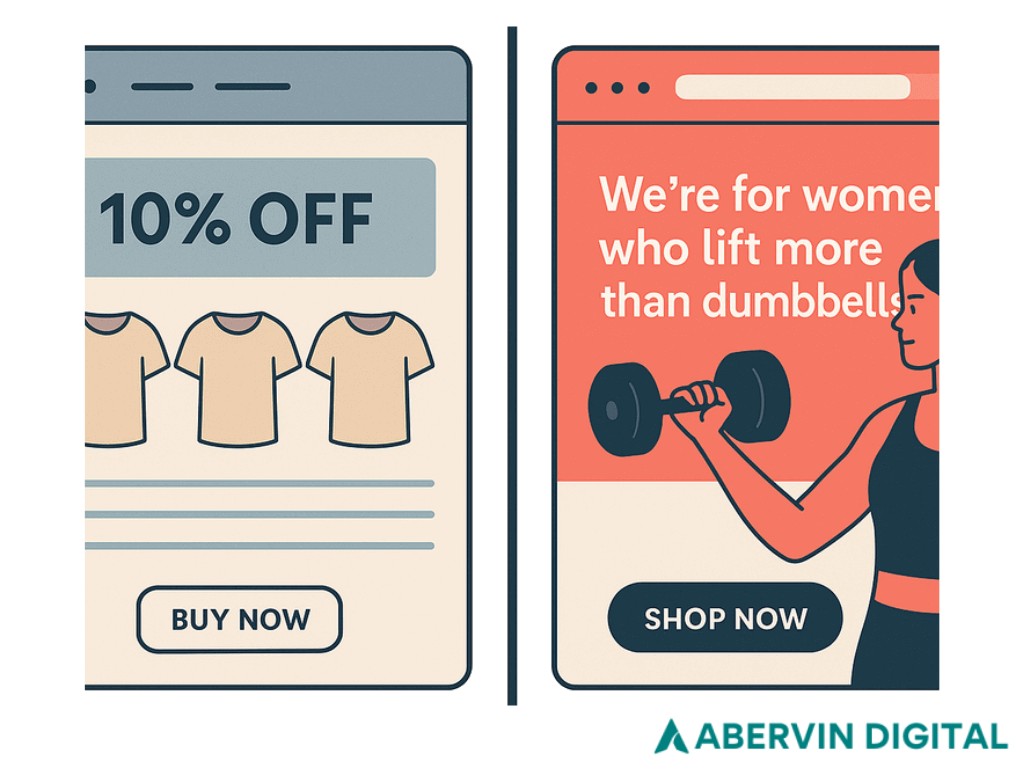
Most ecommerce brands look and sound the same. Everyone has the same products, specs, discounts. So if you want to scale ecommerce, you need to make people feel something. And that starts with your Unique Value Proposition (UVP).
Your UVP is the answer to: Why should someone choose your brand over the 10 other tabs they’ve got open?
A great UVP does three things:
- Speaks to a specific audience
- Shows how you’re meaningfully different
- Connects emotionally or with identity
Let’s make that make sense with these examples
- “Made without microplastics – for oceans and your skin.” This speaks to the eco-conscious, ethical, and practical.
- “Refills that fit through your letterbox. Subscriptions that don’t suck.” This speaks to people who love convenience and transparency
- “We’re for women who lift more than dumbbells.” This is empowering, cheeky, crystal-clear who your target audience is.
See how those feel personal? Clear? Punchy? Replicate this for your business so you do not come off like every other brand out there.
Your UVP should be obvious on your homepage, your product pages, your TikToks, and your packaging. If someone lands on your site and doesn’t instantly understand what makes you different… you’re losing them. So make your difference (UVP) unmistakable and unmissable. That’s how you scale ecommerce in a crowded market.
Secret #5: Build an Omnichannel Engine to Scale Ecommerce Without Burnout
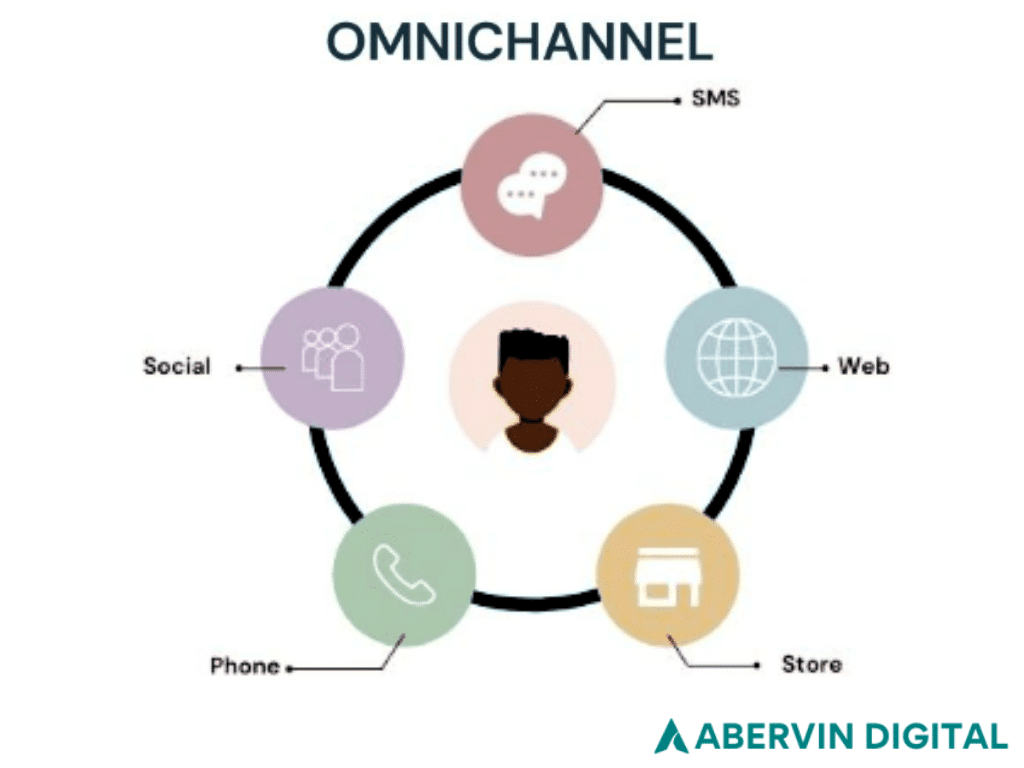
Many ecommerce businesses fail because their marketing is scattered. One day it’s a sale email, the next a random reel, then a poorly targeted ad. No consistency. No strategy.
But brands that scale ecommerce with ease do it by building systems. Systems where their content, ads, and emails work together like gears in a machine.
Here’s what that looks like:
Email Flows
If you’re looking for how to scale your ecommerce business efficiently, automated email flows offer one of the highest ROIs across all digital marketing channels. Forget the blast-and-hope emails. Modern ecommerce email flows are engineered to drive consistent, scalable growth, not just one-off sales. Think of each flow as part of a conversation with your customer. And if you’re unsure what tools to use to make that possible, here’s our guide to choosing the best email marketing software that fits your business goals.
Value-packed SMS
To truly scale ecommerce in 2025, smart brands are blending SMS with behavioral insights to create hyper-relevant messaging sequences. If you treat SMS like email, you’re doing it wrong. The goal isn’t to text your audience every time you drop a discount. It’s to make them feel like insiders. Value-packed SMS campaigns act like a VIP alert system, used sparingly and strategically.
Send early access offers, exclusive product drops, limited-time deals, or even restock alerts that trigger real FOMO. Keep it short, on-brand, and personal. With open rates north of 90%, SMS is one of the smartest plays for scaling your ecommerce brand if used wisely.
Retargeting Ads
Scaling an ecommerce brand is about smarter targeting that meets people where they are. Most retargeting ads scream “Buy now!” when what your audience really needs is “Here’s why this is worth it.” Instead, treat retargeting as part of your funnel. Build dynamic ad sequences based on where someone is in the journey.
- Purchased already? Pitch a complementary product or referral discount.
- Someone bounced off your homepage? Serve them a carousel of real customer reviews.
- Added-to-cart but didn’t buy? Try a short video ad explaining your brand’s guarantee or showcasing a behind-the-scenes look.
Organic Social
This is where your brand shows personality and shares values. The goal here isn’t to “go viral”… it’s to make your audience nod and say, “They get me.”. Create behind-the-scenes content and educational reels that solve real pain points.
When your marketing across channels speaks the same language, your brand doesn’t just look bigger, it feels more stable and trustworthy. If you’re not sure where to start, here’s a breakdown of ecommerce email marketing strategies, tools, and best practices for 2025 to help build your omnichannel foundation.
Once your omnichannel system is humming, the next challenge is feeding it the right kind of traffic – and that’s where things get really interesting…
5 TRAFFIC SECRETS TO SCALE ECOMMERCE BUSINESSES
So, you want to scale ecommerce and grow your brand fast. Great—but here’s the truth: not all traffic is good traffic. It’s not about random clicks or vanity metrics. If you want to scale ecommerce profitably, you need the right people hitting your site. The ones who say, “This is exactly what I’ve been looking for.”
And while traffic matters, it’s what you measure along the way that pinpoints areas where you can scale. Tracking the right email marketing metrics can help you avoid wasted ad spend and understand which campaigns truly drive customer lifetime value.
Below, we’ll break down how to turn that attention into real momentum, repeat buyers, and revenue. If you’re looking for traffic secrets to scale ecommerce or even how to scale ecommerce website structure for growth, you’re in the right place.
Secret #6 – Scale ECommerce Paid Ads the Smart Way
Running Facebook or TikTok ads without a strategy is one of the quickest ways to burn your money without results. If you want to scale ecommerce profitably, it starts with knowing your numbers. Before you touch that ad budget, you need to know what these three numbers are for you:
- CAC (Customer Acquisition Cost) – what you’re paying to win a new customer
- AOV (Average Order Value) – what that buyer typically spends
- LTV (Customer Lifetime Value) – what they’re really worth over time
If you’re scaling without tracking these, you’re not scaling…you’re gambling. If you don’t know what you’re paying to acquire a customer, how can you scale profitably?
Once you have that data, diversify your ad strategy:
Facebook Ads are still undefeated when it comes to interest-based targeting at scale. Think of Facebook Ads like modern dating apps. You’ve got maybe 2 seconds to impress. Your first ad must stop the scroll, get people curios, and say “this is made for you.” Otherwise? It’s swipe left, scroll past, or skip.
Want to scale ecommerce ads on Facebook? Here’s the formula:
- Use thumb-stopping visuals or motion graphics.
- Call out the user’s identity: “Hey, busy moms…” or “For minimalist sneakerheads…”
- A/B test hooks like “Tired of abandoned carts?” or “Why 37,000 Shopify store owners use this trick…”
The magic of Facebook is its ability to scale from $10/day to $10K/day, but only if you scale creatives alongside budget. If you keep showing the same ad, ad fatigue creeps in and your CPA goes through the roof.
Google Ads
Google Ads is where the buyers are. These are people typing “best wireless earbuds under $50” or “email marketing agency for Shopify.” They’re telling you what they want and your job is to mirror that intent.
Too many ecommerce brands waste Google ad spend on generic copy. Instead, try this:
- Use keyword-rich headlines: “Struggling to Convert Email Opens into Sales? Try These Klaviyo Flows.”
- Match your landing page content to the exact query they searched for.
- Target branded vs. non-branded terms separately so you can track what’s working.
This is where conversion-optimized copy makes all the difference. Scale Google Ads by testing specific offers, segmenting by buyer intent (TOFU vs BOFU), and doubling down on what converts.
TikTok Ads
TikTok is the ADHD Olympics of ecommerce advertising. You’ve got 1-2 seconds to earn attention. It’s not about running ads…it’s about showing content that sells without feeling like a pitch.
Here’s the TikTok ecommerce ad playbook:
- Hook in 2 seconds: “This candle does what??” or “I can’t believe this dress is under $40…”
- Payoff in next 5 seconds: Show the product solving a problem or surprising result.
- CTA wrapped in story: “Link in bio to try it risk-free” or “Use code TIKTOK10 at checkout.”
If you’re scaling ecommerce and ignoring TikTok, you’re missing a goldmine of low CPMs and high engagement especially for Gen Z and impulse-buy segments.
Retargeting:
95% of site visitors won’t buy the first time. That’s not a rejection – it’s just part of the buyer journey and this is where retargeting comes in to turn those browsers into buyers.
Retargeting is where the money is for a lot of businesses. With retargeting you follow them around (politely), and remind them why they clicked in the first place.
Retargeting works because:
- It builds familiarity and trust.
- It reminds people of what caught their attention.
- It keeps you top-of-mind without being pushy.
Run dynamic product ads (“Still thinking about this?”), testimonials (“See why 12,000 customers swear by us”), or urgency-based CTAs (“Only 3 left in stock!”).
Here’s how to scale retargeting without burning out your audience:
- Vary creative formats (carousel, video, UGC).
- Use frequency caps to avoid overexposure.
- Segment by behavior (add to cart vs. viewed only).
Secret #7 – Turn Organic Traffic into Revenue
If you want to scale ecommerce long-term, you can’t rely on paid traffic alone. Sure, ads bring instant clicks, but real momentum comes from organic channels that keep delivering even when your ad budget pauses.
It’s the stuff that doesn’t just show up, but sticks around. It compounds and builds trust while you sleep. And when you do it right, it turns browsers into buyers without needing to outbid your competition every time. That’s how you scale ecommerce sustainably.
So, how do you make your organic channels work as hard (and as profitably) as your paid ads? Let’s start with SEO
SEO – Search Engine Optimization
Strong SEO is how to scale ecommerce without doubling your ad spend When you write a blog post that ranks, that page doesn’t just exist, it brings in new prospects every day, week, and month. Not by chance, but by matching what people are actively searching for. Someone searching “best supplements for focus” who lands on your SEO-optimized post is already halfway convinced. The idea is to build trust with new audiences by becoming the go-to answer in your niche.
To scale ecommerce website visibility, focus your content around real questions and needs. Match search intent and make it easy for Google and people to find and trust you.
UGC (User-Generated Content)
Now that they’ve found you, what convinces them to believe you? It’s not your fancy logo or the 12th version of your brand font. It’s other people. User-Generated Content is organic social proof in its rawest, most relatable form.
We’re talking about reviews, testimonials, unboxings, casual walkthroughs – this is content that feels real because it is real. And whether it shows up on TikTok, Instagram, or even embedded into your blog, UGC builds bridges that you as a brand cannot. One good UGC reel can outperform a month’s worth of polished creative. No budget can buy that level of authenticity.
Blogging
If you still think blogs are dead, then you’re doing blogging all wrong. The difference between a blog that sells and a blog that just exists lies in structure and strategy. To scale ecommerce through blogs, write with a goal.
If you create blogs that answers a specific question, shows real examples, links to a freebie, product, or audit naturally…then you will have turned a basic blog into a mini sales funnel, hiding in plain sight. You don’t need to be the best writer in New York to make this happen. You just need to create relevant content, and include subtle CTAs.
Influencer outreach
What happens when your blog and content get picked up or shared by someone with an audience? When an influencer naturally includes your blog in a roundup, or references your free resource in a video, that action is an organic multiplier because these micro-influencers are people whose audiences trust them because they don’t shill every product that comes their way. So when you get mentioned by influencers like that in your niche, that traffic doesn’t bounce – it just converts.
Everything we’ve talked about – SEO, UGC, blogging, outreach, all comes down to Your organic content should always lead somewhere. Each post, video, or blog should lead someone closer to the sale without being pushy. Serve first, sell later.
Secret #8 – Build a Customer Acquisition Funnel, Not Just Ads
If your entire strategy is “run an ad, sell a thing,” you’re not building a business… you’re setting yourself up for disappointment. Paid traffic is often misunderstood so you have a lot of business owners who think of it like a vending machine: put in money, get a sale. But real customer acquisition doesn’t work like that anymore. Not with all the competition out there.
People don’t know you yet. They don’t trust you or care about your product – yet. To truly scale ecommerce in 2025, you need a real acquisition funnel that warms up cold leads and builds trust before you pitch. If you want to see a step-by-step breakdown of how to move prospects through each stage effectively, check out our guide on The 3 Stages of a Sales Funnel
Here’s what that looks like:
Cold traffic → Lead magnet → Warm retargeting → Conversion
Stage 1: Cold Traffic → Lead Magnet:
Most people who spot your ad the first time are only passing by. They’re not ready to pull out their wallet. At best, you’ve sparked a little curiosity. Selling right then is like asking for marriage on the first date – it just feels off. That’s where lead magnets come in – free guides, quizzes, checklists, or mini trainings. Something useful, fast, and aligned with the problem your actual offer solves to ease them in.
Stage 2: Warm Retargeting → Trust-Building Content:
Now that they’ve raised their hand and opted in, it’s time to show up again. But not with more “BUY NOW” energy. With trust-building content. This for your business could be something like – customer stories or testimonials, a behind-the-scenes video of how your product works. Retargeting with warm ads here works way better and cheaper than cold pitching.
Stage 3: Conversion Offer:
Once you’ve earned some credibility and attention, now you can confidently pitch your product or service. But as you can see this is the third step, not the first. When your funnel is doing its job: You’ve already educated them on the problem, you’ve proven your value through helpful content and they’ve seen others using it and winning. So when you present your real offer, whether it’s a product, service, or consultation – it doesn’t feel like a hard sell. It feels like a solution they’ve been warming up to this whole time.
You wouldn’t invest in something you’ve never seen in action. So why run your ads like that?
If you want better ROI from your paid traffic, stop chasing one-click wins and instead build a funnel that gives cold leads room to warm up. This is how to scale ecommerce without wasting thousands on cold ads that go nowhere.
For a deeper dive into email funnel strategy, this guide on email marketing for ecommerce in 2025 breaks down the tools, tactics, and flows that work best today.
Secret #9 – Scale Ecommerce With Influencer Marketing
Not all paid traffic comes from Meta Ads or Google Search. Some of the most persuasive traffic comes from people, not platforms.
Influencer marketing is a form of paid traffic that can feel like organic love. The endorsement, the social proof, the ability to show your product in a lifestyle context is a money maker when done right and one of the fastest ways to scale ecommerce, especially in niche markets.
So here’s how to use influencers effectively without flushing your marketing budget down the drain.
Start with Micro-influencers (5k-50k followers)
Most brands chase big follower counts – but the truth is numbers can lie. That’s why micro-influencers can sometimes outperform their celebrity-status peers. Their audiences tend to be tighter, more engaged, and actually listen to what they say. What this means is when they talk about your product, it doesn’t sound like a press release – it sounds like a friendly recommendation.
Macro-influencers (100k+)
When you have traction and confirmation that using an influencer works in your niche, switch to Macro-influencers. They have reach and often have niche authority. However, just because someone has 250k followers doesn’t mean they can send 250 people to your website. So with Macro-influencers you need to ask for screenshots of past campaigns, click-through rates (CTR) on past sponsored posts. Now, one thing to note is any influencer unwilling to show results probably doesn’t have them.
Set Clear Terms and Track Everything
Influencer deals get messy when expectations aren’t clear. Before any post goes live, you need a real agreement in place. What exactly are they delivering? (Post? Reel? Story with swipe-up?). Can you repost their content on your site or ads? Are you paying flat rate, per post, or rev share?. Covering things like usage rights, delivery dates, and payment timelines keeps both sides accountable and professional.
Oh – and even if an influencer has charisma and creative genius, you still need proof that using them is working. Otherwise, how will you know whether to scale the partnership – or cut ties?.
To do this effectively, use UTM links, custom discount codes, or affiliate software to track the actual impact of every campaign. Focus on sales, clicks and conversions – not just follower counts.
This is how to scale ecommerce with influencer marketing that doesn’t just look good but also converts.
Secret #10 – How To Turn Clicks To Customers (Conversion Rate Optimization)
So you’ve done the hard part: getting people to your site. You’ve run the ads, posted the reels, made the tweets and now traffic is rolling in – but here’s the million-dollar question: Are they buying?
Whether it’s from Facebook Ads, Google PPC, TikTok promos, or sponsored newsletter placements, paid traffic is a tool. You’re renting attention. Every click has a cost. And if your site isn’t ready to convert that attention into action, you’re not investing – you’re basically throwing money in the bin.
You could have 10,000 visitors and make 5 sales… or you could have 1,000 visitors and make 50. Visitors don’t mean much if they leave without taking action. Learning how to scale an ecommerce website means plugging funnel holes and turning clicks into customers. Conversion Rate Optimization is how you plug the holes in your funnel, so you’re not leaking leads at every step.
Here’s how you can use Conversion Rate Optimization to get more from the traffic you already have.
Use CRO tools
Before you can improve anything, you need to know where you’re losing people. You might think your call-to-action is clear, or that your checkout page is smooth as butter, but the data often tells a different story. Tools like Hotjar and Crazy Egg let you spy (ethically) on user behavior. You’ll see heatmaps showing what gets clicked, scroll maps showing where attention drops off, and session recordings where you can literally follow someone’s mouse trail.
Maybe your users are getting stuck on a shipping calculator. Maybe they’re scrolling past your best offer because it’s buried halfway down the page. Watching these patterns can show you exactly what needs fixing.
A/B test Everything
What you think is working may not be what actually works. This is why we recommend A/B testing everything. You run two (or more) versions of a page, headline, button, or layout and see which one gets better results. Play with button text. “Buy Now” vs. “Get Yours Today” can have totally different results. You might love that artsy hero image at the top of your homepage, but your visitors might just want to see the dang product. Test and let the numbers talk. Do it enough, and your site starts getting sharper, tighter, and more in sync with how your buyers behave – not how you wish they did.
Simplify Checkout & No Hidden Costs
Once people are sold enough to click “Buy,” don’t give them a reason to bounce. Your checkout flow should be short, clear, and easy to complete. Remove unnecessary form fields. Don’t ask for info you don’t absolutely need. Make the process feel smooth, fast, and reassuring. That means adding trust signals like verified reviews, security badges, satisfaction guarantees. And for the love of user sanity, show shipping costs early. Hidden fees at the last second are the fastest way to turn a warm lead into a cold exit.
If you are focused on growing traffic, pause and ask yourself: What am I doing to convert the traffic I already have? Because the truth is, doubling your conversion rate is often easier – and way cheaper – than doubling your traffic.
#1 CUSTOMER RETENTION SECRET TO SCALE ECOMMERCE BUSINESSES
You’ve spent ad money. You’ve done your funnel optimization and you even got a new customer to hit that “place order” button. Now what?
Now let’s talk about the real growth lever: getting that customer to buy again. If you want to scale ecommerce, mastering retention is your most reliable path to profit.
This bonus secret will show you exactly how to scale ecommerce through smart, automated email flows that build loyalty and create repeat purchases. Let’s get right into it.
Secret #11: Set Up Email Marketing Automation
If you’re still thinking of email as a weekly newsletter blast, you’re missing the point – and the profit.
Your customers aren’t hoping you message them every day. In fact, they barely want to see your messages. But they do appreciate well-timed emails that make them feel remembered. Seen. Understood. They want you to show up at the right moment. And the one thing that allows you to do that is setting up email marketing automations using the right email marketing software.
With email automation, you can send the right message to the right person at the right time – based on their actions, preferences, or timing triggers. And the cool thing is you set it up once, and it runs quietly in the background sending timely messages for as long as you want.
Now, let’s talk about the four most powerful email automations you should start with:
Welcome Series
The welcome series has the highest open rate of any message you’ll ever send. This isn’t the time for a bland “Thanks for signing up.” This is your shot to tell your story. Share what makes your brand special. Highlight your bestsellers, set expectations by letting them know how often you’ll email them, what kind of content they’ll get, why they should care.
A great welcome series should go like this:
Email 1: Your story + welcome
Email 2: Bestsellers or top categories
Email 3: Social proof (testimonials, press, user-generated content)
Email 4: A small irresistible offer
By the end of that sequence, they should know who you are, what you stand for, and why they should stick around. Nail this, and you’re already ahead of most ecommerce brands wondering how to scale ecommerce with email.
Abandoned Cart Series
If someone added your product to their cart and then bounced. That’s a good sign they wanted it – but life happened. They got a phone call. Their kid spilled juice. Their browser crashed. You get the idea. An abandoned cart flow is your second chance to get them back in action. It should feel like a helpful reminder, with a touch of personality.
A good abandoned cart series looks something like:
Email 1 (within 1 hour): “Still thinking about this?” with product image and cart preview
Email 2 (next day): Add urgency – “Inventory is low” or “Cart expires soon”
Email 3 (48–72 hours later): Sweeten the deal with a discount, free shipping, or a bonus gift
Your goal here is to make it easy for the returning customer to click and check out.
Win-Back Emails
When a customer hasn’t engaged with your brand in 60 days or more, it doesn’t always mean they’ve lost interest. More often than not, life simply got in the way. A well-executed win-back email sequence is your opportunity to reestablish that connection and bring them back into the customer lifecycle.
The key is to approach these emails as a reminder, not a sales pitch. Highlight what’s changed or improved since their last interaction – whether it’s new product launches, limited-time offers, or you can even send product recommendations based on previous purchases.
A high-performing win-back flow often looks like this:
First Email (Day 60): “We’d love to have you back” – highlight new arrivals or a personalized offer
Second Email (Day 65): Reinforce your value – share top-rated products, customer testimonials, or exclusive content
Third Email (Day 72): Create urgency – offer an incentive with a clear expiration date to encourage action
This approach helps you maintain brand awareness and potentially reactivate high-value customers, all while keeping your email list clean and engaged.
Behavior-Based Flows
The best emails don’t just show up, they show up at the right time, with the right message. That’s what behavior-based email flows do. Let’s talk about the four proven flows that do just that – Browse Abandonment flow helps remind them what caught their eye, answer questions they may have and convince them with real customer reviews.
Then there’s the Product Click Follow-Up, perfect for those moments when someone clicks on an item in your email but doesn’t buy. Maybe they needed more details. Maybe they got interrupted. This flow gives them a second look, with quick highlights of why the product stands out.
Next up is the Category Interest Flow which goes out when someone browses a section of your store – like home decor, skincare, or tech accessories. This is a strong sign of what they’re into. Use this opportunity to send a personalized roundup: top-rated products, customer favorites, or a quick guide to match their interest.
And finally, the High-Intent Browsing Flow. This one’s for visitors who are checking the same product more than once, or viewing multiple similar items. It’s your chance to guide them toward the finish line. You can send helpful FAQs, reassurance about shipping and returns, or even a subtle reminder that the item’s in high demand.
These automations scale ecommerce websites by doing the work while you sleep, allowing you to target customer behavior in real-time without spending a dollar more on ads. We discuss these automations extensively in our blog on Email Marketing for Ecommerce in 2025.
And that’s a wrap on 11 EXPERT SECRETS To Scale Your Ecommerce Business in 2025
This is what separates fast-growing brands from the ones still stuck refreshing yesterday’s Shopify stats.
In 2025, “just running ads” won’t cut it. Real growth starts before the ad – in your products, your positioning, your promise, and the experience you deliver after the sale. The brands that win are the ones that make customers feel like they belong.
So don’t just take what you’ve read and nod along…use it. Start with one secret today. Build your brand story. Pick a better product. Get serious about LTV. Tighten up your UVP.
And hey, if you want expert help pulling all this together… Contact us: Abervin Digital at +1 (720) 583-5547 or visit our site to check out our pricing and packages. Whether you’re looking for email flows that convert, Klaviyo optimization, or a full-funnel strategy, we’re here to help you turn browsers into buyers, and buyers into die-hard fans.





